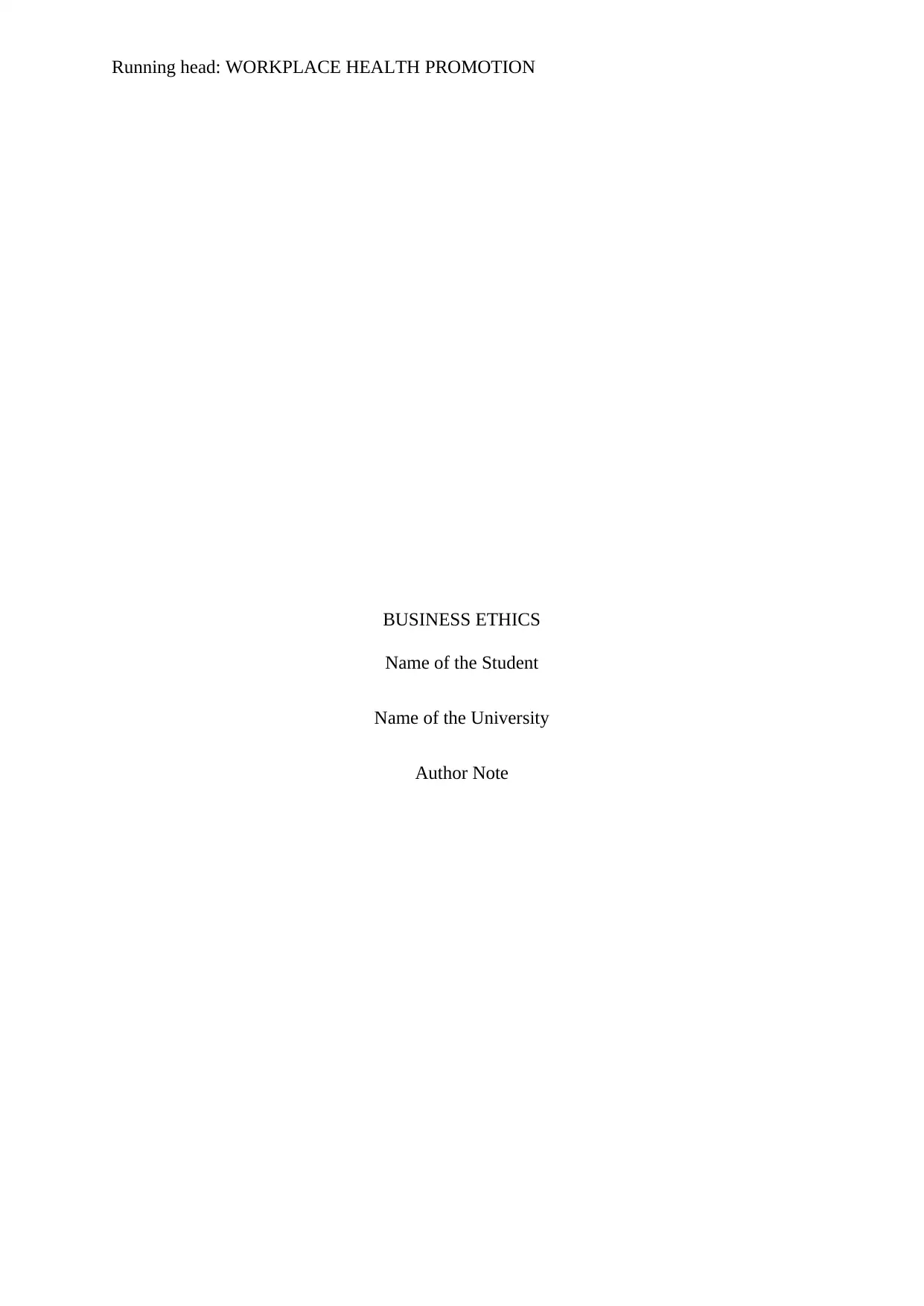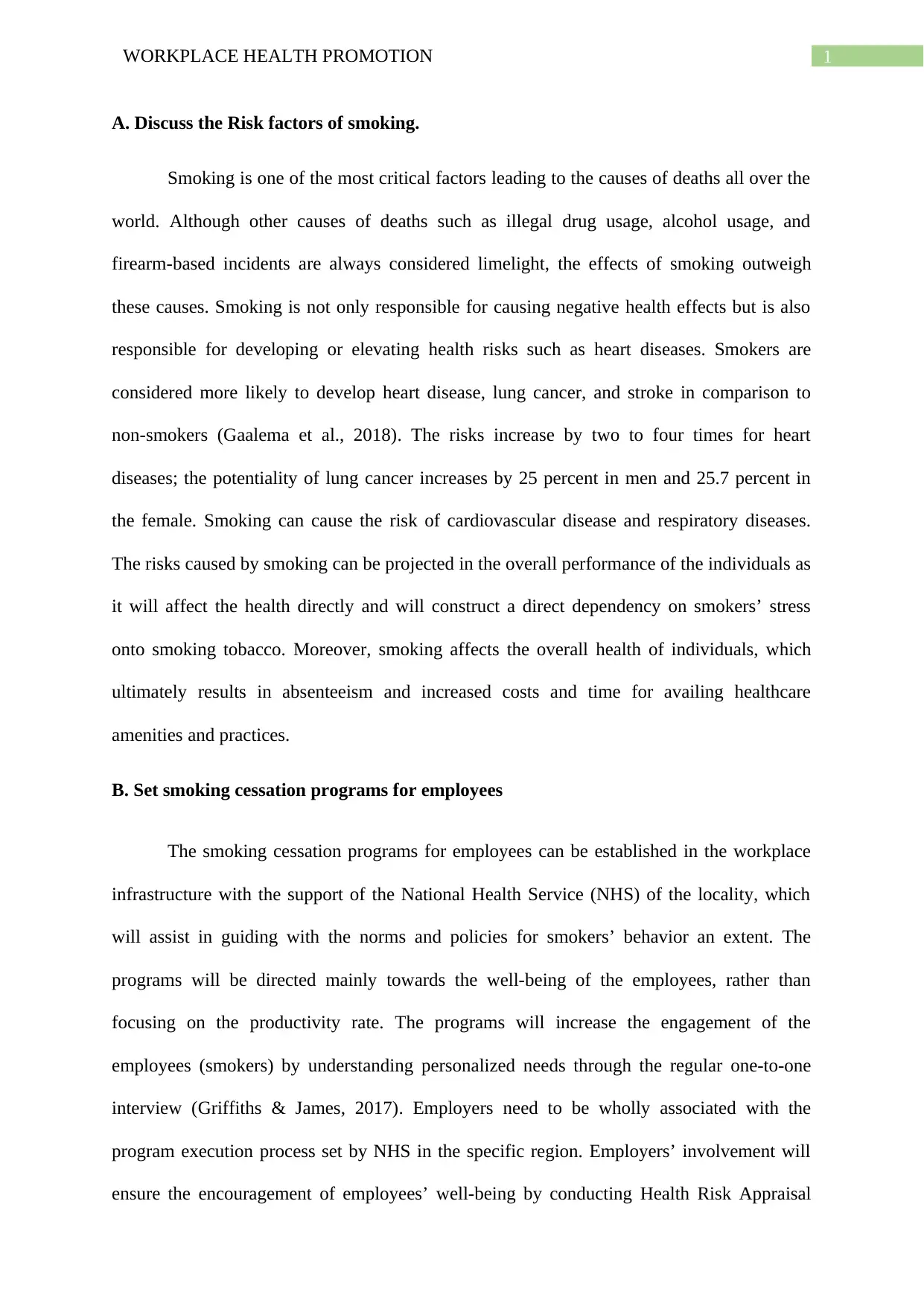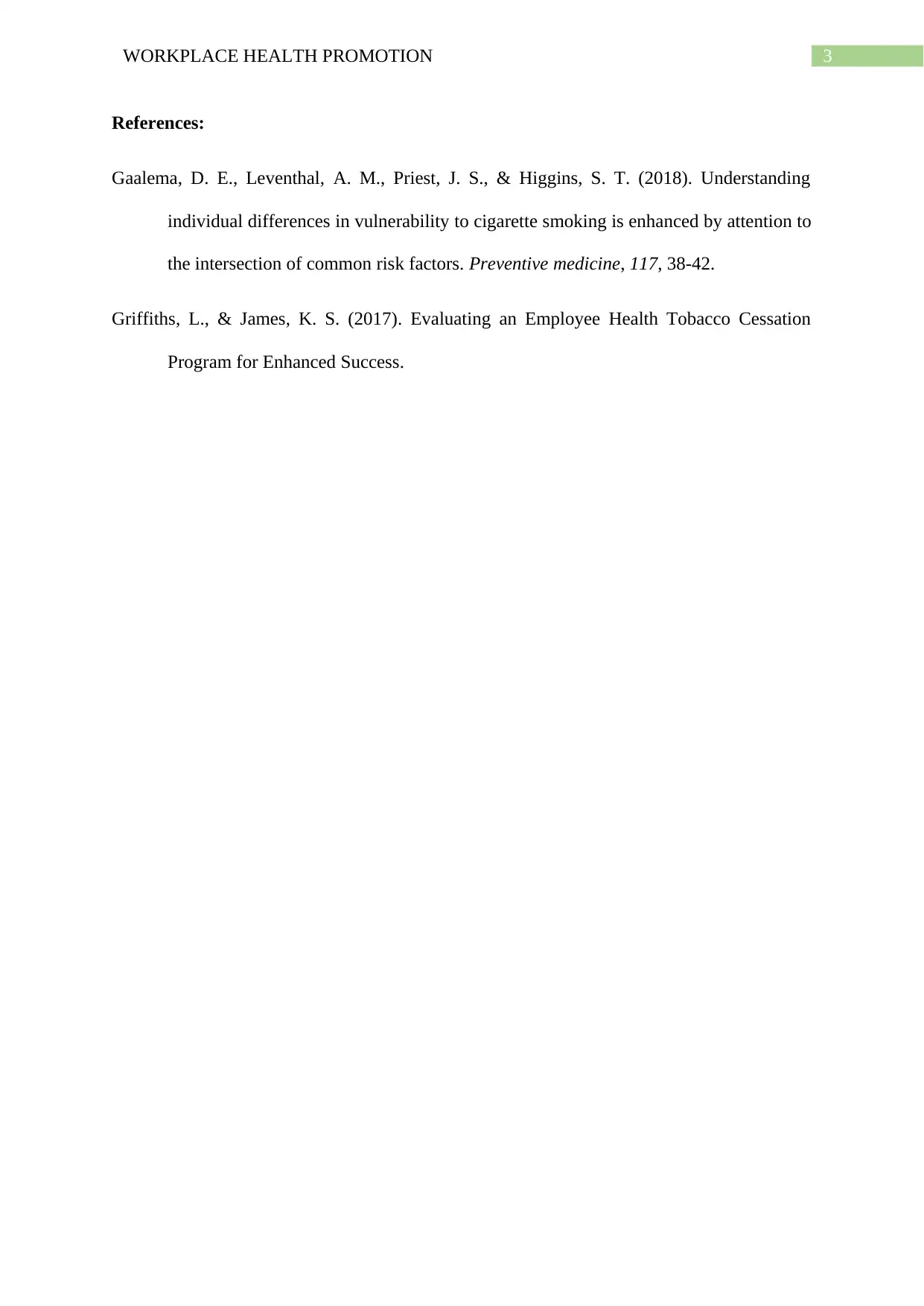Workplace Health Promotion: Addressing Smoking Risk Factors & Programs
VerifiedAdded on 2022/08/22
|4
|513
|15
Essay
AI Summary
This essay addresses the critical risk factors associated with smoking, emphasizing its significant contribution to global mortality rates and various health complications such as heart disease, lung cancer, and respiratory illnesses. It proposes the establishment of smoking cessation programs within the workplace, supported by the National Health Service (NHS), to guide and support employees in modifying their smoking habits. The proposed programs prioritize employee well-being through personalized interventions, including one-to-one interviews and health risk appraisals, facilitated by Wellness Coaches. The active involvement of employers in these programs is crucial for fostering a supportive environment and encouraging employees to address their smoking dependencies, ultimately leading to improved health outcomes and reduced healthcare costs.
1 out of 4











![[object Object]](/_next/static/media/star-bottom.7253800d.svg)